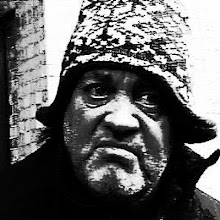The continuing saga of the Georgia Jacob lamp copy.
I made a clear, epoxy resin base for the lampshade using a coaster mold (couldn't be bothered looking for something larger) but, while it was drying, Hay's dad blundered into the kitchen and accidentally knocked it over while looking at it, sending everything scattering on the kitchen floor.
Anyway, I attempted to rescue the situation. The result, despite some wobbliness, was sufficient to proceed with construction. The base of the lamp material was too narrow, resulting in the lampshade taking on a V shape, rather than a U.
I overcame this by placing a large ball into the base of the shade and warming the base of the material with a hear gun. This allowed the base to flare out into the required U shape, enabling the flutes of the material to be shaped into a more upright position.
However, the fluting at the base is hideous (first of the photos below), with sharp, irregular folds, rather than evenly spaced flutes, as in the original (2nd photo below).
What I need is a mold over which to place the resin coated material so that the base forms evenly - a ribbed hemisphere. It's the base that's crucial to the overall shape - get the folds in the base wrong and the whole thing goes squonk, as the actress said to the Bishop.
My intention is to get Hay's sister, who is a ceramicist, to fashion a former / mold from clay that replicates the base of the original and bake it in her kiln. I can then cover it in clingfilm (or something similarly repellent to resin) and use it to create the perfect base shape for multiple lamps. Once the base is suitably and evenly fluted, the rest of the shade will naturally follow.
One thing I have only just noticed is that the corners of the square that forms the lampshade are on concave folds and therefore close to the central axis, where as mine are convex and furthest away from the central axis. Ensuring the long points are on concave folds and near the axis enhances stability.
The hole for the base definitely has to be planned and marked out beforehand so as to obtain the best graduated fall effect from back to front. Make it too offset and one side will be much heavier than the other, leading to balancing problems, especially if the base is small.





No comments:
Post a Comment